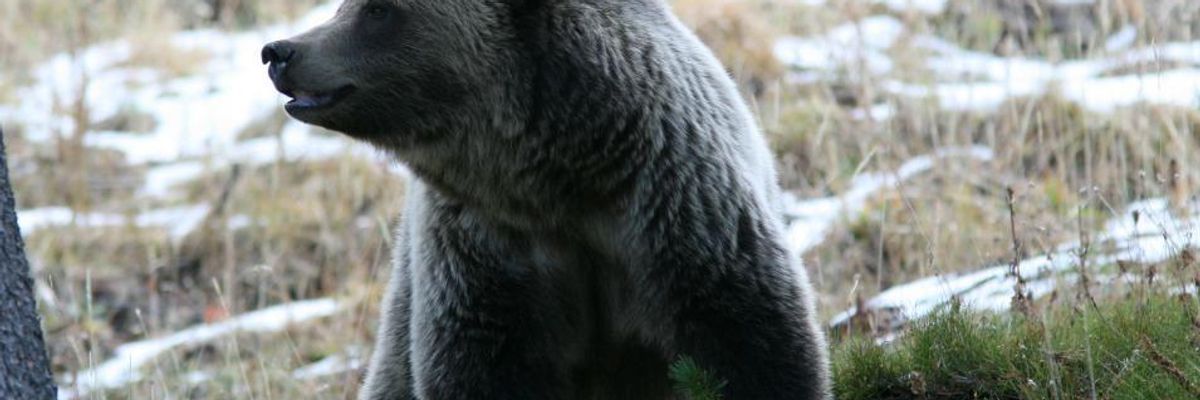First Nations tribes and green groups celebrated a federal court's ruling late Monday that the Trump administration acted illegally when it gutted the Endangered Species Act's (ESA) protections for grizzly bears in the Yellowstone National Park region.
The U.S. District Court in Montana saved the area's grizzly population from a trophy hunt that was scheduled to take place this fall in Wyoming and Idaho, in which as many as 23 bears could be have been killed. The hunt would have been the first to take place in the continental U.S. since 1991.
The Crow Nation and several other tribes sued the Trump administration after the U.S. Fish and Wildlife Service rolled back the protections last year despite that, according to the Sierra Club, "an estimated 11 percent of the grizzlies in what biologists call the 'demographic monitoring area' of the Greater Yellowstone Ecosystem died" in 2017. The vast majority of those deaths were attributable to human activity, including conflicts with ranchers in the area.
"Wyoming's trophy hunt is one part of the desecration of the sacred," Brandon Sazue, chairman of the Crow Creek Sioux Tribe, a co-plaintiff in the suit, toldMontana Public Radio earlier this year. "The other will be extractive industry moving into sacred tribal lands here, now that restrictions have been lifted on land usage and leases by removing the grizzly bears' ESA status."
In a series of tweets, the Center for Biological Diversity's Kieran Suckling detailed the contours of the judge's ruling and its importance:
Advocates also expressed hope that the government, instead of rolling back protections for species like the grizzly bear, would face the facts about the impact of the climate crisis on such animals. According to the Sierra Club, rising temperatures "appear to be reducing the availability of some of the bears' crucial food sources, like whitebark pine nuts and trout."
"We're glad the court sided with science instead of states bent on reducing the Yellowstone grizzly population and subjecting these beloved bears to a trophy hunt," said Bonnie Rice of the Sierra Club's Our Wild America Campaign. "Changing food sources, isolation, inadequate state management plans and other threats that grizzly bears continue to face warrant strong protections until they reach full recovery."
"People around the world will applaud the decision to again protect Yellowstone's beloved grizzly bears under the Endangered Species Act" said Andrea Santarsiere, a senior attorney with the Center for Biological Diversity. "Facing ongoing threats and occupying a fraction of their historic range, grizzly bears are nowhere near recovery. These beautiful and beleaguered animals certainly shouldn't be shot for cheap thrills or a bearskin rug."

